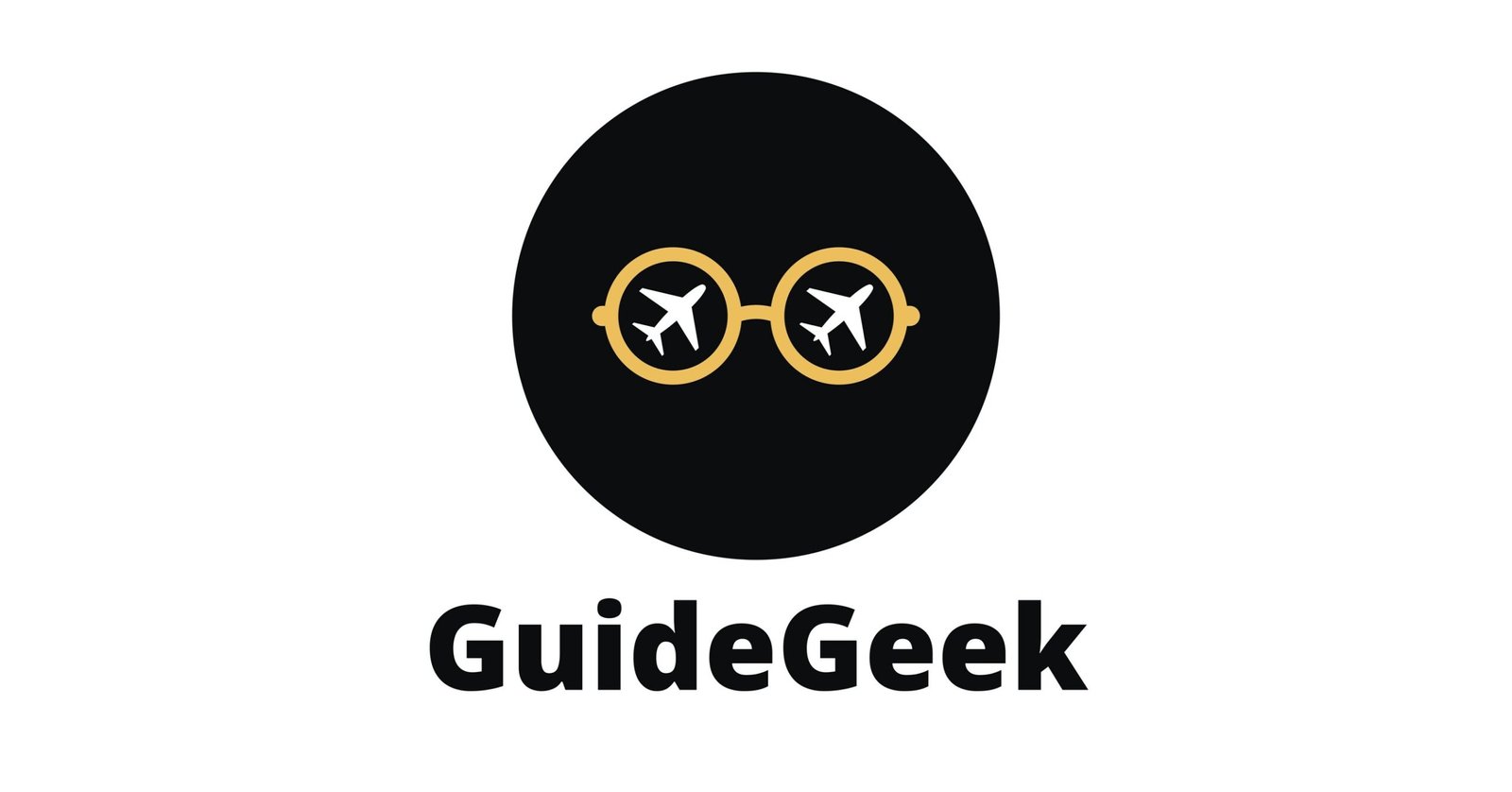AI in Travel
New York City Launches New AI Travel Guide

Travelers heading to New York City now have one more tool in their arsenal to help them experience the city, an AI chat platform called Libby, short for Liberty.
The new AI tool, available on New York City Tourism + Conventions’ website on the lower right-hand side, along with the city’s official Instagram and WhatsApp, is available in 60 different languages and will provide quick answers to any travel or tourism-related questions about the city.
The responses travelers receive are personalized with extensive data from the tourism organization.
“We’re pleased to unveil Libby, the official AI chat platform for exploring New York City,” says Julie Coker, president and CEO of New York City Tourism + Conventions. “As we gear up for America 250 celebrations and the 2026 FIFA World Cup, we’re proud to offer this free, innovative tool in 60 languages that empowers global visitors to craft unique itineraries and discover unforgettable experiences across all five boroughs.”
New York City will also promote Libby at 4,000+ LinkNYC screens at transit stops. Libby was created in partnership with GuideGeek AI technology from Matador Network.
For the latest travel news, updates and deals, subscribe to the daily TravelPulse newsletter.
Topics From This Article to Explore
AI in Travel
Air Travel Pricing: Delta’s AI fare strategy: Cheaper flights or high-tech price hikes?

How it works: AI-powered dynamic pricing
Delta’s AI system, developed by Israeli startup Fetcherr, analyzes a wide range of data in real time such as demand trends, market fluctuations, booking pace, and competitor pricing. Rather than using static fare charts, the AI suggests optimal prices that can adapt instantly to changing conditions.
Delta President Glen Hauenstein called it a “reengineering” of pricing science and noted early trials have led to “amazingly favorable unit revenues,” a metric used to gauge profitability per seat.
Concerns over fairness and transparency
Despite Delta’s optimism, the move has sparked concern among lawmakers and consumer advocates. Senators Mark Warner, Richard Blumenthal, and Ruben Gallego sent a letter to the airline questioning whether AI driven fare decisions could lead to “surveillance pricing.” Their concern: that AI might use personal data to charge individuals based on their perceived willingness to pay.
Delta responds: No personal data used
Delta has firmly denied using personal information to set prices. In a statement, the airline clarified that it does not use browsing history, financial details, or customer profiles. Instead, pricing is based on anonymized market data and traditional travel factors like origin, destination, date, seat class, and refundability. “All customers have access to the same fares,” a Delta spokesperson emphasized.
A broader trend in air travel?
Industry analysts suggest this is just the beginning. As airlines compete for profitability in a volatile market, many are likely to adopt AI tools to gain an edge. While dynamic pricing isn’t new, the speed and granularity offered by AI raises concerns about fairness and transparency.Consumer rights groups are keeping a close eye on the issue. A new bill in Congress, called the Stop AI Price Gouging and Wage Fixing Act, seeks to ban the use of consumer profiling in pricing and could impact how AI tools like these are used in the future.
FAQs
Q1. What is Delta’s AI pricing system?
A1. Delta is using artificial intelligence to set ticket prices based on real-time market data. The system is designed to optimize fares depending on demand, competition, and booking trends.
Q2. How could AI-based pricing affect travelers?
A2. Travelers may see more frequent changes in fares based on demand and timing. It might get harder to know when you’re getting the best deal.
AI in Travel
The Case for Makefiles in Python Projects (And How to Get Started)

 Image by Author | Ideogram
Image by Author | Ideogram# Introduction
Picture this: you’re working on a Python project, and every time you want to run tests, you type python3 -m pytest tests/ --verbose --cov=src. When you want to format your code, it’s black . && isort .. For linting, you run flake8 src tests. Before you know it, you’re juggling a dozen different commands, and your teammates are doing the same thing slightly differently, too.
This is where Makefiles come in handy. Originally used for C and C++ projects, Makefiles can be super useful in Python development as a simple way to standardize and automate common tasks. Think of a Makefile as a single place where you define shortcuts for all the things you do repeatedly.
# Why Use Makefiles in Python Projects?
Consistency Across Your Team
When everyone on your team runs make test instead of remembering the exact pytest command with all its flags, you eliminate the “works on my machine” problem. New team members can jump in and immediately know how to run tests, format code, or deploy the application.
Documentation That Actually Works
Unlike README files that get outdated, Makefiles serve as useful documentation. When someone runs make help, they see exactly what tasks are available and how to use them.
Simplified Complex Workflows
Some tasks require multiple steps. Maybe you need to install dependencies, run migrations, seed test data, and then start your development server. With a Makefile, this becomes a single make dev command.
# Getting Started with Your First Python Makefile
Let’s build a practical Makefile step by step. Create a file named Makefile (no extension) in your project root.
// Basic Structure and Help Command
This code creates an automatic help system for your Makefile that displays all available commands with their descriptions:
.PHONY: help
help: ## Show this help message
@echo "Available commands:"
@grep -E '^[a-zA-Z_-]+:.*?## .*$$' $(MAKEFILE_LIST) | sort | awk 'BEGIN {FS = ":.*?## "}; {printf " \033[36m%-15s\033[0m %s\n", $$1, $$2}'
.DEFAULT_GOAL := help
The .PHONY: help tells Make that “help” isn’t a real file but a command to run. When you type make help, it first prints “Available commands:” then uses a combination of grep and awk to scan through the Makefile itself, find all lines that have command names followed by ## description, and format them into a nice readable list with command names and their explanations.
// Environment Setup
This code creates three environment management commands:
.PHONY: install
install: ## Install dependencies
pip install -r requirements.txt
pip install -r requirements-dev.txt
.PHONY: venv
venv: ## Create virtual environment
python3 -m venv venv
@echo "Activate with: source venv/bin/activate"
.PHONY: clean
clean: ## Clean up cache files and build artifacts
find . -type f -name "*.pyc" -delete
find . -type d -name "__pycache__" -delete
find . -type d -name "*.egg-info" -exec rm -rf {} +
rm -rf build/ dist/ .coverage htmlcov/ .pytest_cache/
The install command runs pip twice to install both main dependencies and development tools from requirements files. The venv command creates a new Python virtual environment folder called “venv” and prints instructions on how to activate it.
The clean command removes all the messy files Python creates during development. It deletes compiled Python files (.pyc), cache folders (pycache), package info directories, and build artifacts like coverage reports and test caches.
// Code Quality and Testing
This creates code quality commands:
.PHONY: format
format: ## Format code with black and isort
black .
isort .
.PHONY: lint
lint: ## Run linting checks
flake8 src tests
black --check .
isort --check-only .
.PHONY: test
test: ## Run tests
python -m pytest tests/ --verbose
.PHONY: test-cov
test-cov: ## Run tests with coverage
python -m pytest tests/ --verbose --cov=src --cov-report=html --cov-report=term
.PHONY: check
check: lint test ## Run all checks (lint + test)
The format command automatically fixes your code style using black for formatting and isort for import organization.
The lint command checks if your code follows style rules without changing anything. flake8 finds style violations, while black and isort run in check-only mode to see if formatting is needed.
The test command runs the test suite. test-cov runs tests and also measures code coverage and generates reports. The check command runs both linting and testing together by depending on the lint and test commands.
// Development Workflow
This creates development workflow commands:
.PHONY: dev
dev: install ## Set up development environment
@echo "Development environment ready!"
@echo "Run 'make serve' to start the development server"
.PHONY: serve
serve: ## Start development server
python3 -m flask run --debug
.PHONY: shell
shell: ## Start Python shell with app context
python3 -c "from src.app import create_app; app=create_app(); app.app_context().push(); import IPython; IPython.start_ipython()"
The dev command first runs the install command to set up dependencies, then prints success messages with next steps. The serve command starts a Flask development server in debug mode.
The shell command launches an IPython shell that’s already connected to your Flask app context, so you can test database queries and app functions interactively without manually importing everything.
# More Makefile Techniques
// Using Variables
You can define variables to avoid repetition:
PYTHON := python3
TEST_PATH := tests/
SRC_PATH := src/
.PHONY: test
test: ## Run tests
$(PYTHON) -m pytest $(TEST_PATH) --verbose
// Conditional Commands
Sometimes you want different behavior based on the environment:
.PHONY: deploy
deploy: ## Deploy application
ifeq ($(ENV),production)
@echo "Deploying to production..."
# Production deployment commands
else
@echo "Deploying to staging..."
# Staging deployment commands
endif
// File Dependencies
You can make targets depend on files, so they only run when needed:
requirements.txt: pyproject.toml
pip-compile pyproject.toml
.PHONY: sync-deps
sync-deps: requirements.txt ## Sync dependencies
pip-sync requirements.txt
🔗 Here’s an example of a complete Makefile for a Flask web application.
# Best Practices and Tips
Here are some best practices to follow when writing Makefiles:
- Don’t overcomplicate your Makefile. If a task is getting complex, consider moving the logic to a separate script and calling it from Make.
- Choose command names that clearly indicate what they do. make test is better than make t, and make dev-setup is clearer than make setup.
- For commands that don’t create files, always declare them as .PHONY. This prevents issues if someone creates a file with the same name as your command.
- Organize your Makefiles to group related functionality together.
- Make sure all your commands work from a fresh clone of your repository. Nothing frustrates new contributors like a broken setup process.
# Conclusion
Makefiles might seem like an old-school tool, but they’re effective for Python projects. They provide a consistent interface for common tasks and help new contributors get productive quickly.
Create a basic Makefile with just install, test, and help commands. As your project grows and your workflow becomes more complex, you can add more targets and dependencies as needed.
Remember, the goal isn’t to create the most clever or complex Makefile possible. It’s to make your daily development tasks easier and more reliable. Keep it simple, keep it useful, and let your Makefile become the command center that brings order to your Python project chaos.
Bala Priya C is a developer and technical writer from India. She likes working at the intersection of math, programming, data science, and content creation. Her areas of interest and expertise include DevOps, data science, and natural language processing. She enjoys reading, writing, coding, and coffee! Currently, she’s working on learning and sharing her knowledge with the developer community by authoring tutorials, how-to guides, opinion pieces, and more. Bala also creates engaging resource overviews and coding tutorials.
AI in Travel
A New AI Travel Genius for Visitors Powered by GuideGeek

NEW YORK, Aug. 5, 2025 /PRNewswire/ — Travelers visiting New York City can now rely on Libby, an AI travel genius that provides instant responses to any travel or tourism questions about the five boroughs in 60 languages. Libby is an initiative of New York City Tourism + Conventions, the official destination marketing organization and convention and visitors bureau for the five boroughs of New York City, and leverages GuideGeek artificial intelligence technology from Matador Network.
“We’re pleased to unveil Libby, the official AI chat platform for exploring New York City,” says Julie Coker, president and CEO of New York City Tourism + Conventions. “As we gear up for America 250 celebrations and the 2026 FIFA World Cup, we’re proud to offer this free, innovative tool in 60 languages that empowers global visitors to craft unique itineraries and discover unforgettable experiences across all five boroughs.”
Libby, short for Liberty, assists visitors, or locals exploring another borough, with tailored travel tips and itineraries, connecting people to local businesses, attractions and cultural experiences. The personalized, real-time responses are generated by AI trained on extensive data from NYC Tourism, coupled with over 1,000 integrations for travel information from GuideGeek’s award-winning technology.
The launch of Libby follows the success of Ellis, the first meetings and conventions planning artificial intelligence chat platform created for business event professionals, launched by NYC Tourism and GuideGeek earlier this year. The tool doubled traffic to NYC Tourism’s meeting website within the first month. Libby provides a broader consumer tool for travelers of all sorts.
“It is absolutely impossible to do or see everything in New York City, even if you visit often or live there,” says Matador Network CEO Ross Borden. “Libby helps visitors and those exploring a new corner of the city instantly find restaurants, activities and hidden gems that really align with their interests and preferences.”
To access Libby, travelers can visit nyctourism.com and click the chat icon in the bottom-right corner. They can also connect with the AI on WhatsApp or Instagram to ask questions and receive tips on the go while exploring the city. In addition, 4,000-plus LinkNYC screens at transit stops will promote the AI to visitors and locals.
About New York City Tourism + Conventions
New York City Tourism + Conventions is the official destination marketing organization (DMO) and convention and visitors bureau (CVB) for the five boroughs of New York City. Our mission is to invite the world and energize the City, building equitable, sustainable economic prosperity and community through tourism for the mutual benefit of residents, businesses and visitors. For all there is to do and see in New York City, visit nyctourism.com.
About Matador Network
Matador Network is the world’s No. 1 media brand for modern adventurers and creator of the award-winning AI travel genius GuideGeek. With more than 16 million followers across social media, Matador has become a leading travel brand through its production of article features, city guides, creator-first content and original videos. Matador is the top-ranking travel brand on TikTok and its videos are viewed more than 140 million times per month. It has content distribution deals with destinations throughout the world and major brands in the travel industry and beyond. matadornetwork.com
Media Contact:
Jason Simms
860-526-1555
[email protected]
SOURCE Matador Network
-

 Brand Stories2 weeks ago
Brand Stories2 weeks agoBloom Hotels: A Modern Vision of Hospitality Redefining Travel
-

 Brand Stories2 weeks ago
Brand Stories2 weeks agoCheQin.ai sets a new standard for hotel booking with its AI capabilities: empowering travellers to bargain, choose the best, and book with clarity.
-

 Destinations & Things To Do2 weeks ago
Destinations & Things To Do2 weeks agoUntouched Destinations: Stunning Hidden Gems You Must Visit
-

 Destinations & Things To Do1 week ago
Destinations & Things To Do1 week agoThis Hidden Beach in India Glows at Night-But Only in One Secret Season
-

 AI in Travel2 weeks ago
AI in Travel2 weeks agoAI Travel Revolution: Must-Have Guide to the Best Experience
-

 Brand Stories1 month ago
Brand Stories1 month agoVoice AI Startup ElevenLabs Plans to Add Hubs Around the World
-

 Brand Stories4 weeks ago
Brand Stories4 weeks agoHow Elon Musk’s rogue Grok chatbot became a cautionary AI tale
-

 Brand Stories2 weeks ago
Brand Stories2 weeks agoContactless Hospitality: Why Remote Management Technology Is Key to Seamless Guest Experiences
-

 Asia Travel Pulse1 month ago
Asia Travel Pulse1 month agoLooking For Adventure In Asia? Here Are 7 Epic Destinations You Need To Experience At Least Once – Zee News
-

 AI in Travel1 month ago
AI in Travel1 month ago‘Will AI take my job?’ A trip to a Beijing fortune-telling bar to see what lies ahead | China













You must be logged in to post a comment Login